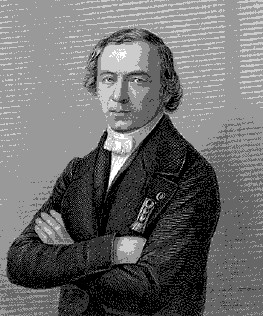Problem Set 2
Chapters 2 and 3
Due: Monday, February 4, 2008
The Conformation Module in the Study Aids will give you a good overview of the subject of conformation. Work your way through ethane, propane, and butane.
The alkane module in ORGO will be of assistance in solving some of these problems.
The Heats of Reaction module (StudyAids/thermochemistry) will be of assistance.
|
The prevailing theory of organic structure in the early 19th century was Dualism or the Electrochemical Theory, principally championed by Berzelius. Since inorganic sodium chloride could be considered as Na+Cl-, then an alkyl halide such as RCl could be thought of as R+Cl-. The R group or "radical" of its day, was thought to be immutable, the carbons and hydrogens behaving as though they were an element. Liebig and Dumas, influential chemists of the day, published a joint paper (1837), On the Present State of Organic Chemistry., extolling the concept and claiming all that was left to do was to identify these immutable radicals (benzoyl, ethyl, acetyl, etc.) A Parisian reception was to change all of this. The guests were discomforted by fumes from the candles. Dumas was called in as a consultant. He found that the waxes (fatty esters) had exchanged chlorine for hydrogen, the culprit being the by-product hydrogen chloride. |

Jean-Baptiste-André Dumas (1800-1884) |
The concept of exchanging electropositive hydrogen for electronegative chlorine was anathema to dualism, although Liebig and Wöhler had done precisely this in 1832 on their work on the benzoyl radical (C7H5O). Dumas's student, Laurent, not one to shirk from controversy, was bold enough to call the process substitution rather than exchange. Thus was Substitution Theory born. Moreover, Dumas (1838) was able to substitute three of the four hydrogens of acetic acid for chlorine to form trichloroacetic acid, having similar properties to acetic acid. The recognition of these similar properties led to early Type Theory. In 1842, Melsen, a student of Dumas, reversed Dumas's experiment by reducing trichloroacetic acid to acetic acid by the action of zinc metal. The promulgation of Substitution Theory gave the wry wit of Wöhler, a.k.a., S. C. H. Windler, an opportunity to shine. As Radical Theory of the early 19th century waned, at the turn of the 20th century free radicals, to distinguish them from the older radicals, were detected and investigated. The very process of substituting chlorine for hydrogen is a free radical reaction. |